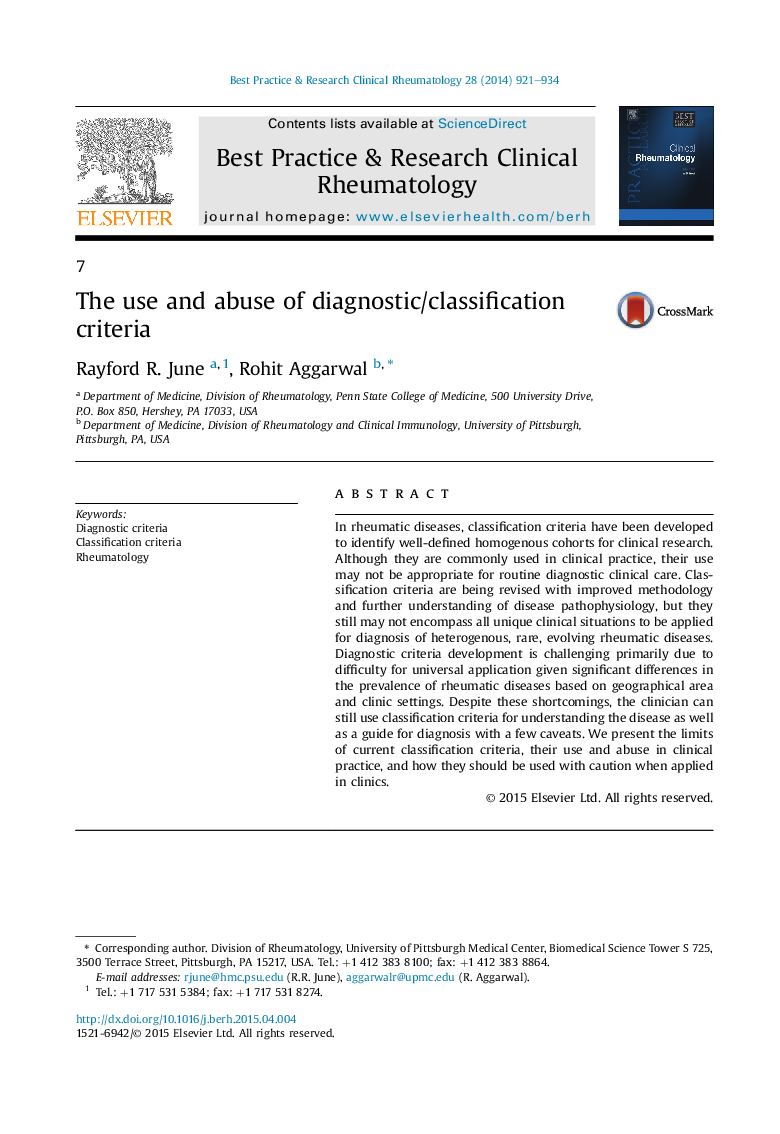| Article ID | Journal | Published Year | Pages | File Type |
|---|---|---|---|---|
| 3342846 | Best Practice & Research Clinical Rheumatology | 2014 | 14 Pages |
In rheumatic diseases, classification criteria have been developed to identify well-defined homogenous cohorts for clinical research. Although they are commonly used in clinical practice, their use may not be appropriate for routine diagnostic clinical care. Classification criteria are being revised with improved methodology and further understanding of disease pathophysiology, but they still may not encompass all unique clinical situations to be applied for diagnosis of heterogenous, rare, evolving rheumatic diseases. Diagnostic criteria development is challenging primarily due to difficulty for universal application given significant differences in the prevalence of rheumatic diseases based on geographical area and clinic settings. Despite these shortcomings, the clinician can still use classification criteria for understanding the disease as well as a guide for diagnosis with a few caveats. We present the limits of current classification criteria, their use and abuse in clinical practice, and how they should be used with caution when applied in clinics.
